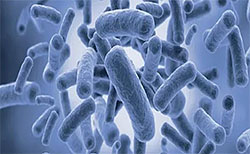7 Best Lactobacillus Plantarum probiotics

- 50 billion bacteria per capsule
- Contains 10 different strains

- Contains 30 billion bacteria per capsule
- Contains 8 different bacteria strains

- Contains 10 billion bacteria per capsule
- Contains 8 different bacteria strains

- 55 billion bacteria per capsule
- Contains 10 different strains

- Combination of bacteria strains and prebiotics (Inulin-FOS)
- 3.4 billion bacteria from 6 different strains

- Contains 10 billion bacteria per capsule
- Does not need to be refrigerated

- Contains 30 billion bacteria per capsule
- Broad spectrum with 17 different bacterial strains
Choose from over 20 probiotic products containing Lactobacillus Plantarum here or read more below first.
Characteristics of Lactobacillus (Lactiplantibacillus) plantarum

Thanks to a unique genome, this bacterial species can adapt more easily to different environments and conditions.
It has a high tolerance to strong acidic environments, such as the stomach.
It is a species naturally found in high concentrations in foods fermented with lactic acid, such as grape juice, sauerkraut, capers and wine.
It has a proven colonization ability.
